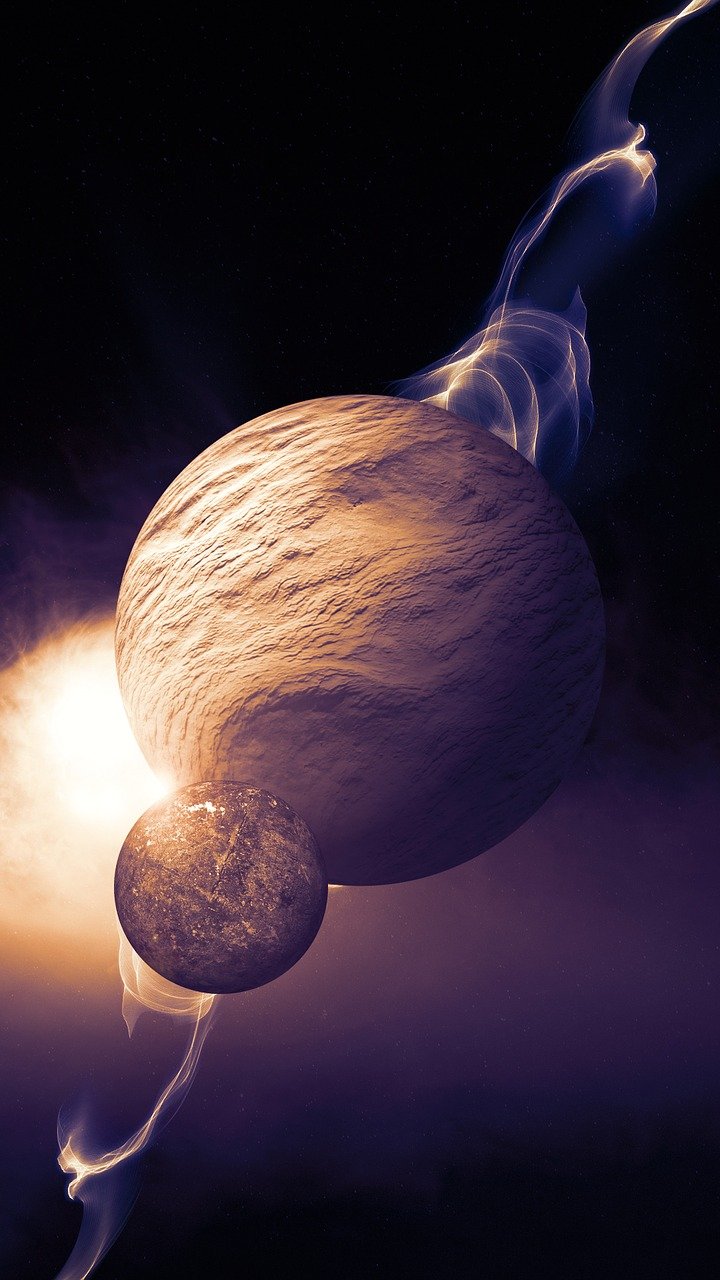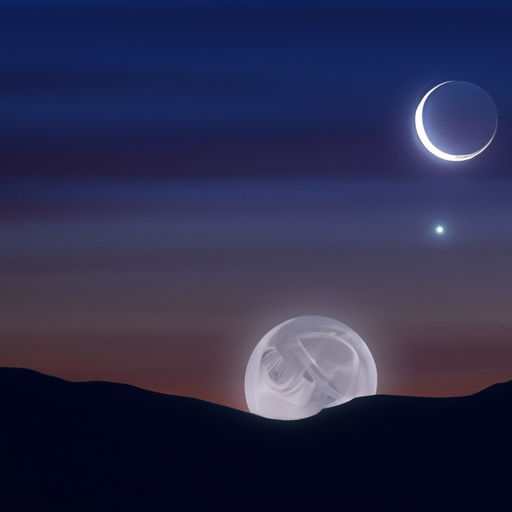Step outside on a clear night, tilt your head back, and witness a mesmerizing spectacle unfolding before your eyes: the celestial duo of Venus and the Moon. With their radiant beauty and ethereal presence, these two heavenly bodies have captivated the imaginations of humans throughout history. Whether you’re a seasoned stargazer or a casual observer, the enchanting dance between Venus and the Moon will leave you in awe and make you wonder about the vast wonders of our universe.
Venus and the Moon: Celestial Duos in the Night Sky
Introduction
Welcome to the fascinating world of celestial bodies! One of the most captivating sights in the night sky is the celestial duo formed by Venus and the Moon. These two celestial objects often make for an awe-inspiring display, whether you’re a casual stargazer or an avid astronomer. In this article, we will delve into the intricacies of Venus and the Moon, exploring their phases, celestial mechanics, navigation significance, alignments, and their scientific significance.
Understanding Venus and the Moon
Before we delve into the details, let’s familiarize ourselves with Venus and the Moon and their position in the solar system. Venus, named after the Roman goddess of love and beauty, is our neighboring planet, located closer to the Sun than Earth. On the other hand, the Moon is Earth’s natural satellite, orbiting around our planet. Both these celestial objects have captivated human imagination for centuries.
Venus is often referred to as Earth’s sister planet due to its similarity in size and composition. Its thick atmosphere consisting mainly of carbon dioxide creates a greenhouse effect, resulting in scorching temperatures on its surface. In contrast, the Moon has a barren and airless environment, with temperatures ranging from extreme heat to extreme cold. While Venus shines primarily due to its reflective clouds, the Moon illuminates the night sky by reflecting sunlight.

The Phases of the Moon
The Moon goes through various phases as it revolves around the Earth. Understanding these phases enhances our appreciation of the Moon and its interactions with other celestial bodies. The phases occur due to the Moon’s position relative to the Sun and Earth.
The lunar cycle begins with the New Moon phase, where the Moon is not visible from Earth. As it progresses, a small sliver of the Moon becomes visible, forming the Waxing Crescent phase. This phase continues to grow into the First Quarter, where half of the Moon is visible. The Waxing Gibbous phase follows, with the Moon appearing more than half full. Eventually, the Moon reaches its brightest phase during the Full Moon, where it is fully illuminated.
After the Full Moon, the Moon enters the Waning Gibbous phase, gradually appearing less than fully illuminated. The Third Quarter is reached when half of the Moon is once again visible. The lunar cycle concludes with the Waning Crescent phase, where only a small sliver of the Moon is once again visible. This continuous cycle of phases repeats itself approximately every 29.5 days.
The Phases of Venus
Similar to the Moon, Venus also displays different phases as it orbits the Sun. However, due to its position relative to Earth, Venus illuminates the night sky with its brilliance rather than reflecting sunlight. Understanding these phases grants us insight into Venus’ behavior and visibility.
The phases of Venus begin with the Inferior Conjunction, where Venus is located between the Earth and the Sun. At this point, Venus is not visible from Earth, being overwhelmed by the Sun’s brilliance. As Venus starts moving away from the Sun, it becomes visible as either the Morning or Evening Star, depending on its position relative to the Sun.
The Morning Star phase occurs when Venus is visible before dawn in the eastern sky, and the Evening Star phase occurs when Venus is visible after sunset in the western sky. These phases are accompanied by different levels of brightness and visibility, further adding to the celestial spectacle.
Venus reaches its greatest elongation when it appears farthest from the Sun as seen from Earth. During this phase, Venus is often highly visible and shines brightly in the morning or evening sky. Finally, Venus goes through its crescent and gibbous phases, similar to the Moon, as it continues its journey around the Sun.

Celestial Mechanics
In addition to their phases, celestial objects such as Venus and the Moon are subject to various orbital movements. These mechanics determine their positions in the night sky and give rise to the awe-inspiring displays we witness.
The orbital movements of Venus and the Moon are influenced by two key factors: inclination and eccentricity. Inclination refers to the tilt of a celestial body’s orbit relative to a reference plane, while eccentricity measures the deviation of an orbit from a perfect circle. The Moon’s orbit has a very low eccentricity, making it almost circular, whereas Venus’ orbit is more elliptical.
These orbital mechanics, along with the interplay between the gravitational forces of the Sun, Earth, and other celestial objects, shape the intricate celestial dances we witness in the night sky.
Celestial Navigation
Venus and the Moon have been instrumental in celestial navigation throughout history. Before the advent of advanced technology, ancient civilizations relied on the positions and movements of celestial bodies to navigate vast seas and unexplored lands.
Observing the positions of Venus and the Moon allowed sailors and explorers to determine their latitude, enabling them to navigate accurately. By understanding the alignment of these celestial bodies in relation to landmarks on Earth, sailors could plot their course and reach their destinations safely.
Even today, celestial navigation techniques utilizing Venus and the Moon are taught to maritime navigators as a supplementary skill, ensuring they have backup methods in the event of technological failures.

Alignments and Conjunctions
Alignments and conjunctions of celestial objects are special occurrences that attract attention from both amateur and professional astronomers. Venus and the Moon are no exception, often creating stunning visual displays when they appear in close proximity to each other.
An alignment occurs when two celestial objects appear in a straight line, while a conjunction happens when they appear to meet closely. These events can be witnessed from Earth and give rise to some of the most magical moments in the night sky.
Notable Venus-Moon Alignments
The close proximity of Venus and the Moon during their alignments has captivated countless sky enthusiasts. Some notable alignments include their close conjunctions and triangular alignments.
Close conjunctions occur when Venus and the Moon are only a few degrees apart in the night sky, appearing to almost touch each other. These rare events provide a captivating sight, with two seemingly distinct celestial objects merging into one mesmerizing display.
Triangular alignments, on the other hand, occur when Venus and the Moon form a triangle with another celestial object. These alignments amplify the picturesque nature of the night sky, creating a spectacle that is both awe-inspiring and thought-provoking.
Occasionally, Venus and the Moon participate in even more extraordinary celestial events such as occultations and eclipses. During an occultation, the Moon moves in front of Venus, temporarily hiding the planet from view. Eclipses, on the other hand, refer to the alignment of the Moon, Venus, and the Sun, resulting in a darkened or partially obscured view of one or both celestial bodies.

Astronomy and Mythology
Throughout history, celestial objects have played significant roles in mythology, and Venus and the Moon are no exception. In various cultures around the world, legends, stories, and gods have been associated with these celestial bodies, adding a layer of mystique and enchantment to their presence in the night sky.
In ancient Roman mythology, Venus was associated with love, beauty, and fertility. She was often depicted as a goddess adorned with celestial splendor, whose brilliance captivated all those who beheld her. Similarly, the Moon has been revered by numerous civilizations as a symbol of femininity, fertility, and magic.
Scientific Significance
Beyond their alluring beauty and cultural significance, Venus and the Moon hold tremendous scientific importance. Researchers and scientists have thoroughly studied these celestial objects for centuries, gathering valuable data and expanding our understanding of the universe.
For instance, exploration missions to the Moon have allowed scientists to study its geology, gaining insights into the formation and evolution of other planetary bodies. Discoveries made on the Moon have paved the way for space exploration and missions to other celestial bodies in our solar system and beyond.
Similarly, studying Venus provides valuable information about the greenhouse effect, climate change, and the potential for habitability in extreme environments. The data gathered from Venus missions assists scientists in understanding Earth’s climate dynamics and the search for extraterrestrial life.
In conclusion, the celestial duo formed by Venus and the Moon offers a breathtaking sight in the night sky. From their mesmerizing phases to their intricate mechanics, alignments, and scientific significance, these celestial bodies have captivated human imagination and scientific exploration alike. Whether you’re an occasional stargazer or a seasoned astronomer, take a moment to appreciate the beauty and wonder of these celestial duos during your next nocturnal rendezvous with the night sky.